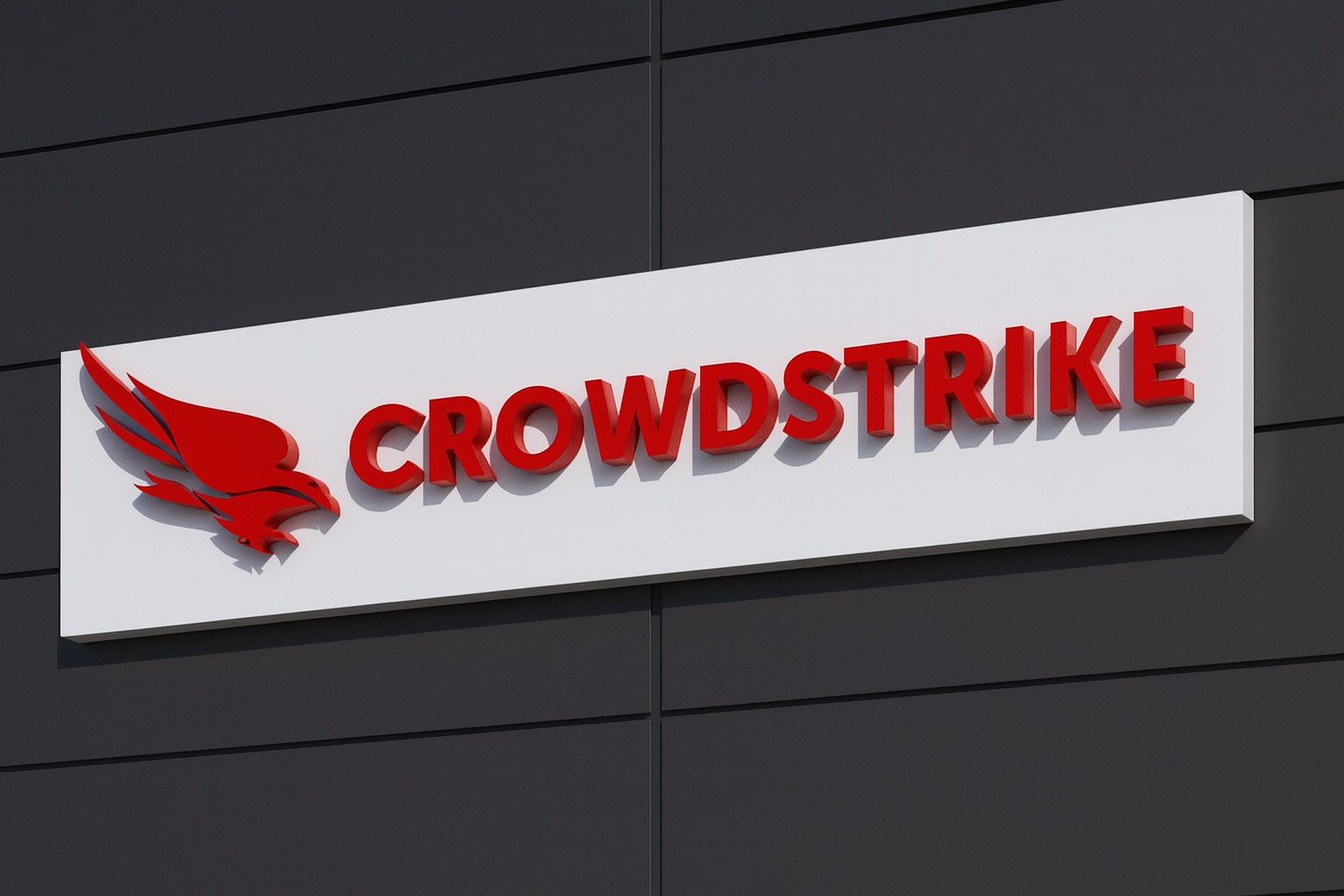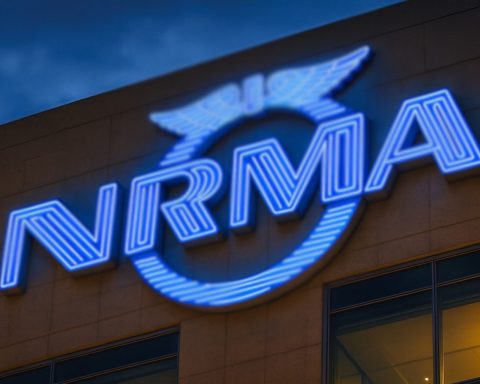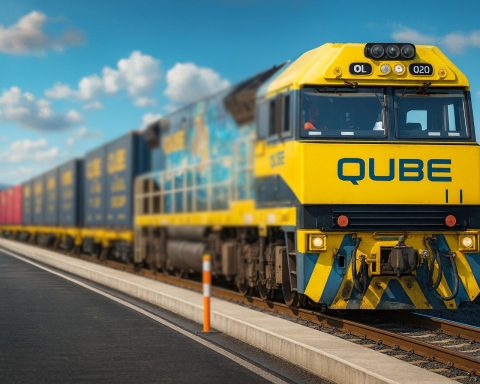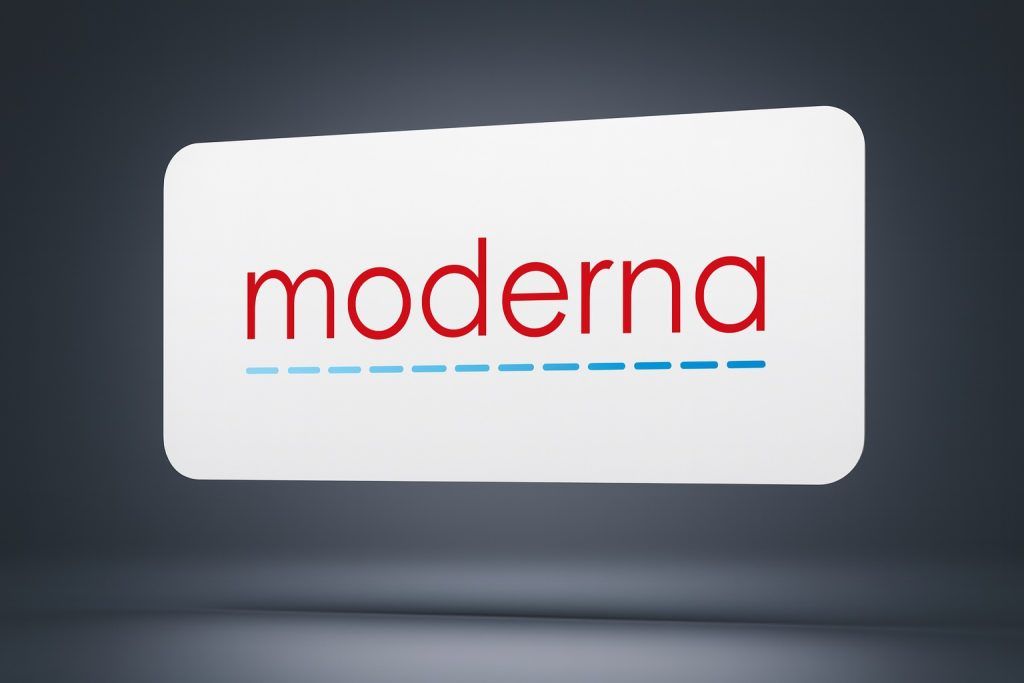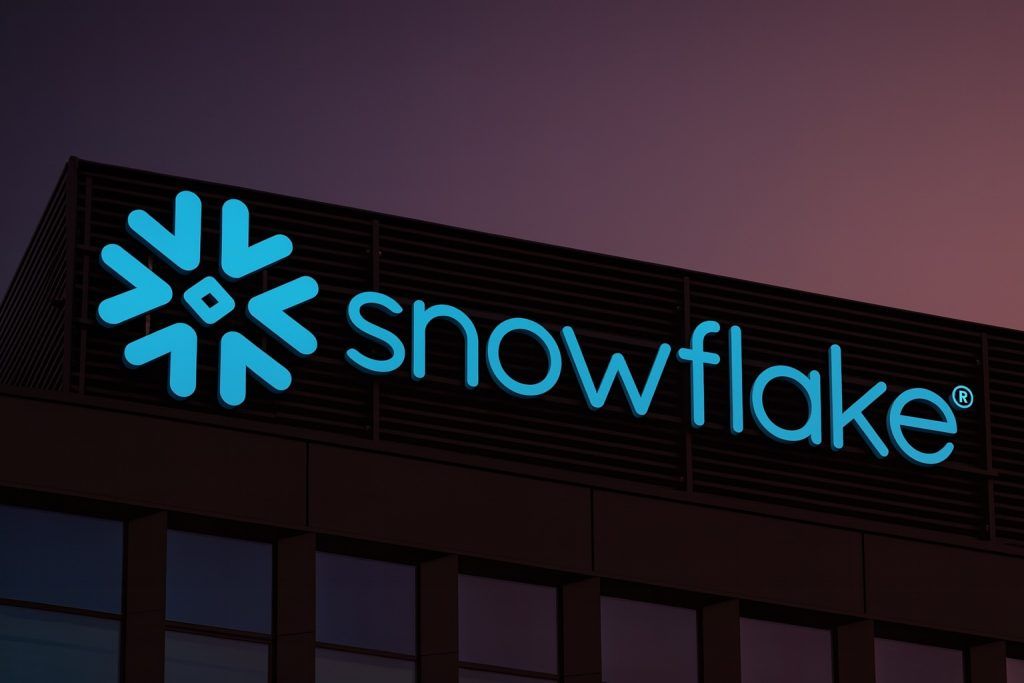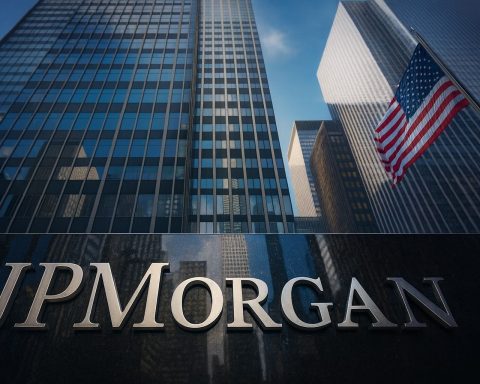- Cybersecurity Leader: CrowdStrike Holdings (NASDAQ: CRWD) is a top cloud-native security provider, known for its AI-driven Falcon platform that protects endpoints and workloads in real time [1]. The company’s innovation in autonomous threat detection has pressured rivals to adopt AI, cementing CrowdStrike’s stature in the industry [2].
- Surging Stock & Rich Valuation: CRWD trades around $500 per share (market cap ~$125 billion) after a steep rally in 2025 [3] [4]. Shares are up ~65% year-on-year, far outpacing the market [5]. However, its valuation is lofty – about 135× forward earnings (vs ~70× for peers) and a PEG over 6 [6] – reflecting big growth expectations.
- Recent Price Moves: After hitting multi-month highs, CrowdStrike stock dipped ~2% on Oct 7 as broader tech pulled back on AI demand concerns [7]. It quickly rebounded by Oct 8, buoyed by bullish analyst calls and strong cybersecurity momentum across the sector. For instance, TD Cowen’s upgrade to a $580 target on Oct 6 gave shares a lift [8] [9].
- Latest News & Developments: CrowdStrike is expanding its capabilities aggressively. In late August it agreed to acquire Onum, a real-time data observability startup, for a reported ~$290 million to bolster its security data pipelines [10]. At its Fal.con 2025 conference in mid-September, the company unveiled new identity protection and AI-era data security features – including phishing-resistant authentication and AI-powered data loss prevention – to address emerging threats from generative AI [11] [12]. CrowdStrike’s CEO George Kurtz also noted a recent surge in Iran-linked cyberattacks amid geopolitical tensions, underscoring the ever-heightening threat landscape [13].
- Analyst & Expert Insights: Wall Street remains broadly bullish on CRWD. Dozens of analysts cover the stock, with ~30 Buy ratings vs <5 Sells, and an average price target around $487 [14] [15]. TD Cowen’s recent hike to $580 (Buy) cited CrowdStrike’s strong execution and growth, while a few skeptics like DZ Bank warn the stock (Sell, PT $440) may be overpriced after its run-up [16]. Financials are solid:CrowdStrike’s latest quarter saw revenue jump ~21% YoY (to ~$0.74 billion) with EPS of $0.93 beating estimates [17]. “This is how we stop breaches at the speed of AI,” CEO Kurtz said of the firm’s automation strategy, highlighting how acquisitions like Onum will help drive “autonomous cybersecurity at scale.” [18] [19] Cybersecurity experts agree that AI-driven platforms like Falcon give defenders a fighting chance against increasingly automated attacks [20] [21].
- Forecasts & Outlook: Looking ahead, CrowdStrike’s growth trajectory remains robust, though not without challenges. For the upcoming quarter, consensus expects ~20% revenue growth (to ~$1.21 billion) and slightly higher EPS (~$0.94) [22]. For full-year FY2025, revenue is on pace for ~$4.8 billion (+20.9% YoY) while EPS may dip ~6% as the company reinvests heavily [23]. In the short term, any earnings beat or raise in outlook could fuel further stock gains – and analysts note that estimate revisions have trended upward (CrowdStrike currently carries a coveted Zacks Rank #1 Strong Buy after a 30% jump in EPS forecasts) [24] [25]. Longer term, bullish analysts argue CrowdStrike’s expanding platform (now spanning endpoints, cloud, identity, and threat intel) positions it for sustained double-digit growth as cybersecurity spending stays a priority [26] [27]. Many foresee a “secular tailwind” from rising cyber threats and AI adoption, with CrowdStrike’s large customer base and innovation engine driving high recurring revenue. However, upside may be more muted unless the company can accelerate earnings growth to justify its premium valuation [28] [29]. Even CrowdStrike’s own discounted cash flow analysis suggests the stock was ~17% above its intrinsic value (~$413) by late 2025 [30], so future gains likely hinge on executing flawlessly and extending its market leadership.
- Competition Snapshot: CrowdStrike operates in a fiercely competitive arena. Its most direct rival is SentinelOne (NYSE: S), another AI-driven endpoint security firm. SentinelOne is smaller (FY2025 revenue ~$0.82 billion) but growing ~22–32% annually [31] [32]. The rivalry between CrowdStrike and SentinelOne – both leveraging machine-speed threat detection – has “pushed the entire industry towards more automation and smarter analytics”, ultimately benefiting enterprise customers [33] [34]. Unlike SentinelOne, which only recently reached cash-flow breakeven, CrowdStrike is already profitable on an adjusted basis and generates over 5× the revenue, giving it scale advantages in R&D and global threat data. Beyond endpoints, Palo Alto Networks (PANW) looms as a broader competitor. Palo Alto, a $130B+ security giant, has traditionally led in firewalls and cloud security but is converging into CrowdStrike’s turf – even announcing a massive $25 billion takeover of CyberArk (identity security) in 2025 to become a one-stop cybersecurity platform [35] [36]. That move highlights an industry trend of consolidation and platform expansion. Meanwhile, CrowdStrike often faces Microsoft in endpoint protection (as many companies consider Microsoft Defender an alternative); however, CrowdStrike’s AI-enhanced detection and independent focus have helped it win business from enterprises seeking best-of-breed defense. The company also partners where it makes sense – for example, it formed an alliance with Zscaler in August to integrate Zscaler’s cloud network security with CrowdStrike’s endpoint protection, enabling “lightning-fast” AI-driven threat response across devices and networks [37] [38]. In summary, CrowdStrike holds a leadership position, but it must continuously innovate as giants like Microsoft and Palo Alto, as well as upstarts like SentinelOne, are all racing to build AI-powered, unified security platforms.
- Cybersecurity Market Trends: The macro backdrop is broadly favorable for CrowdStrike. Cyber threats are at an all-time high – from state-sponsored hacking campaigns to ransomware hitting businesses of all sizes – driving organizations to invest in modern security. In 2025, a wave of high-profile breaches (even tech titans like Microsoft and Oracle were hit by cyberattacks [39]) has kept cybersecurity “front-page news,” reinforcing demand for advanced protection [40]. This urgency is reflected in spending patterns: despite economic uncertainties, global cybersecurity spend continues to rise, and CISOs prioritize breach prevention as mission-critical. A notable trend is the AI arms race in cyber. Attackers are weaponizing generative AI tools to automate phishing and find exploits, while defenders like CrowdStrike are deploying AI “co-pilots” to detect and respond at machine speed [41] [42]. Analysts predict that by 2028, the majority of security operations will include multi-agent AI systems [43]. CrowdStrike has been at the forefront of this shift – its cloud-based AI models learn from billions of events to stop novel threats (if a new ransomware appears at one client, “CrowdStrike’s AI can generalize and help protect others preemptively” [44] [45]). Another industry trend benefiting CrowdStrike is platform consolidation: companies increasingly prefer integrated security suites over many point products. CrowdStrike’s expansion into adjacent areas (like identity protection, cloud workload security, log management via earlier acquisitions, etc.) aligns with this “single platform” preference, helping customers simplify their defenses. Finally, cybersecurity remains relatively resilient to IT budget cuts – as evidenced by CrowdStrike’s ~20% growth even amid mixed economic signals – because the cost of breaches is so high. In short, secular trends like digitization, cloud migration, and escalating cyber warfare provide powerful tailwinds for CrowdStrike’s business in the coming years.
- Key Risks & Challenges: Despite its strengths, CrowdStrike faces noteworthy risks. Valuation risk is front and center – with a triple-digit P/E and ~28× sales multiple [46] [47], the stock is priced for perfection. Any hiccup in execution or growth could trigger a sharp correction. In fact, independent analyses suggest CrowdStrike is “overvalued” by around 15–20% relative to its fundamentals unless it can sustain high growth for many years [48] [49]. The stock’s pullback on Oct 7, 2025 – after a report questioned the longevity of the AI-driven demand surge [50] – shows how sensitive high-multiple stocks like CRWD are to shifting market sentiment. Competitive pressure is another concern: rivals are not standing still. Heavily funded peers (including some startups flush with venture capital [51]) are pushing innovation that could erode CrowdStrike’s edge. Tech giants with deep pockets (e.g. Microsoft bundling security features into its software offerings) pose a threat, potentially pressuring CrowdStrike on pricing or stealing market share among cost-conscious customers. Additionally, as CrowdStrike broadens its platform, it enters new segments with established incumbents (for example, in identity security it will face Okta and ForgeRock, in SIEM/logging it competes with Splunk, etc.), which may require costly go-to-market investments. Margin and growth trade-offs bear watching as well: to capture emerging opportunities (like securing AI workloads or IoT devices), CrowdStrike might ramp up R&D and sales spending, which could pinch profits in the near term – indeed, consensus sees its EPS dipping slightly this year despite strong revenue gains [52]. Lastly, the ever-evolving threat landscape means the company cannot afford any lapse in efficacy. A major breach of a CrowdStrike-protected client or a well-publicized failure to stop an attack could dent the brand’s sterling reputation. Maintaining customer trust is paramount, especially as clients entrust more critical data to CrowdStrike’s cloud. In summary, while CrowdStrike’s outlook is bright, investors should be mindful that high expectations are baked in. The company must execute near-flawlessly amid stiff competition and justify its premium valuation – all while navigating the constant chess match against cyber adversaries. Only by meeting these challenges can CrowdStrike’s stock continue its upward trajectory without stumbling.
Sources: Official company reports and press releases; Yahoo Finance and Zacks Investment Research; Reuters and CNBC interviews; TS2 Tech stock analysis and cybersecurity news [53] [54] [55] [56] [57] [58] [59]. These provide the latest financial data, expert commentary, and industry context as of October 8, 2025.
References
1. ts2.tech, 2. ts2.tech, 3. stockanalysis.com, 4. stockanalysis.com, 5. simplywall.st, 6. www.nasdaq.com, 7. markets.financialcontent.com, 8. www.marketbeat.com, 9. www.marketbeat.com, 10. ts2.tech, 11. siliconangle.com, 12. siliconangle.com, 13. www.facebook.com, 14. www.marketbeat.com, 15. www.marketbeat.com, 16. www.marketbeat.com, 17. www.marketbeat.com, 18. www.securityweek.com, 19. www.securityweek.com, 20. ts2.tech, 21. ts2.tech, 22. www.nasdaq.com, 23. www.nasdaq.com, 24. www.nasdaq.com, 25. www.nasdaq.com, 26. ts2.tech, 27. ts2.tech, 28. simplywall.st, 29. simplywall.st, 30. simplywall.st, 31. www.reuters.com, 32. macrotrends.net, 33. ts2.tech, 34. ts2.tech, 35. ts2.tech, 36. ts2.tech, 37. ts2.tech, 38. ts2.tech, 39. www.reuters.com, 40. ts2.tech, 41. ts2.tech, 42. ts2.tech, 43. ts2.tech, 44. ts2.tech, 45. ts2.tech, 46. simplywall.st, 47. simplywall.st, 48. simplywall.st, 49. simplywall.st, 50. markets.financialcontent.com, 51. ts2.tech, 52. www.nasdaq.com, 53. ts2.tech, 54. www.nasdaq.com, 55. markets.financialcontent.com, 56. www.marketbeat.com, 57. ts2.tech, 58. siliconangle.com, 59. ts2.tech
